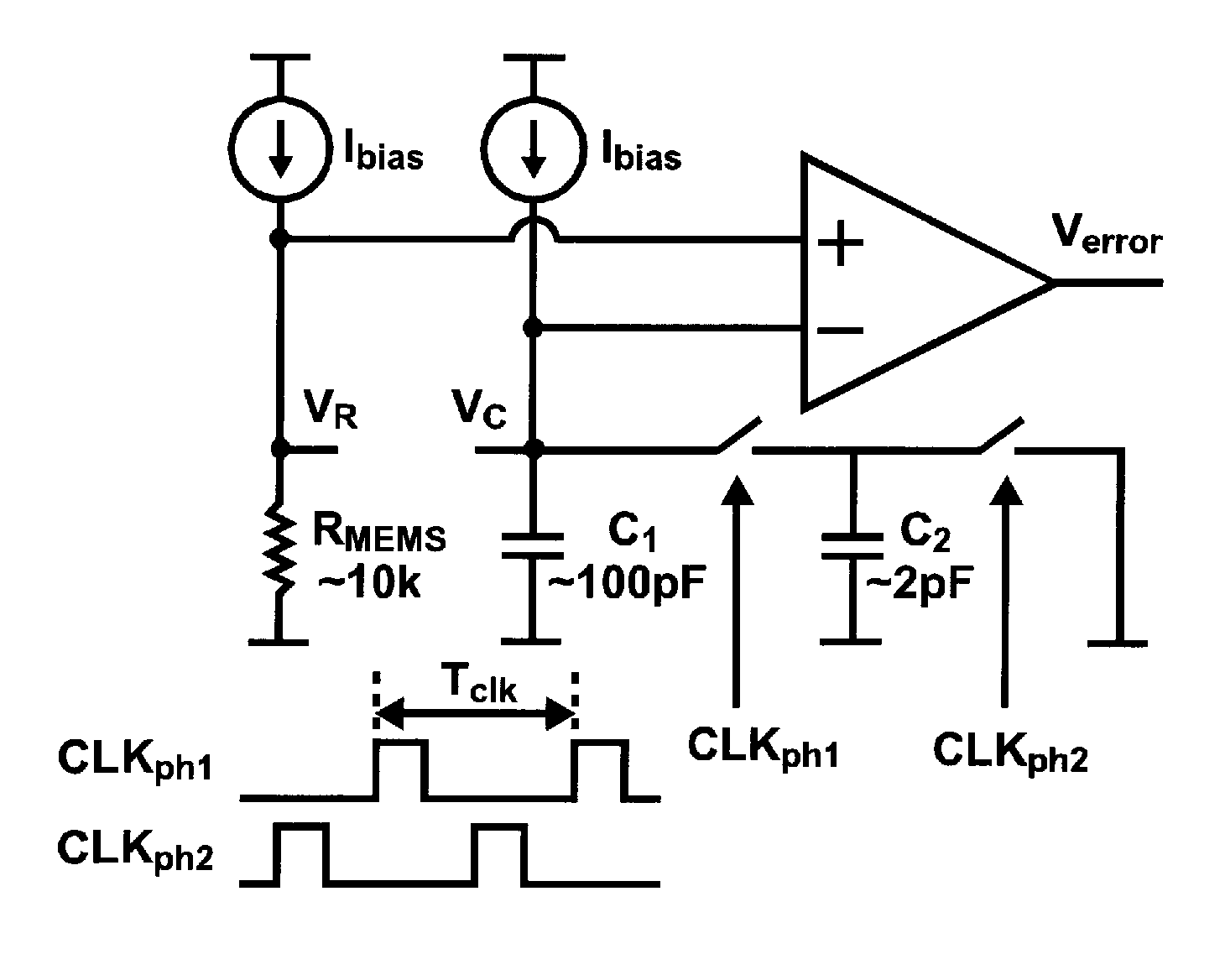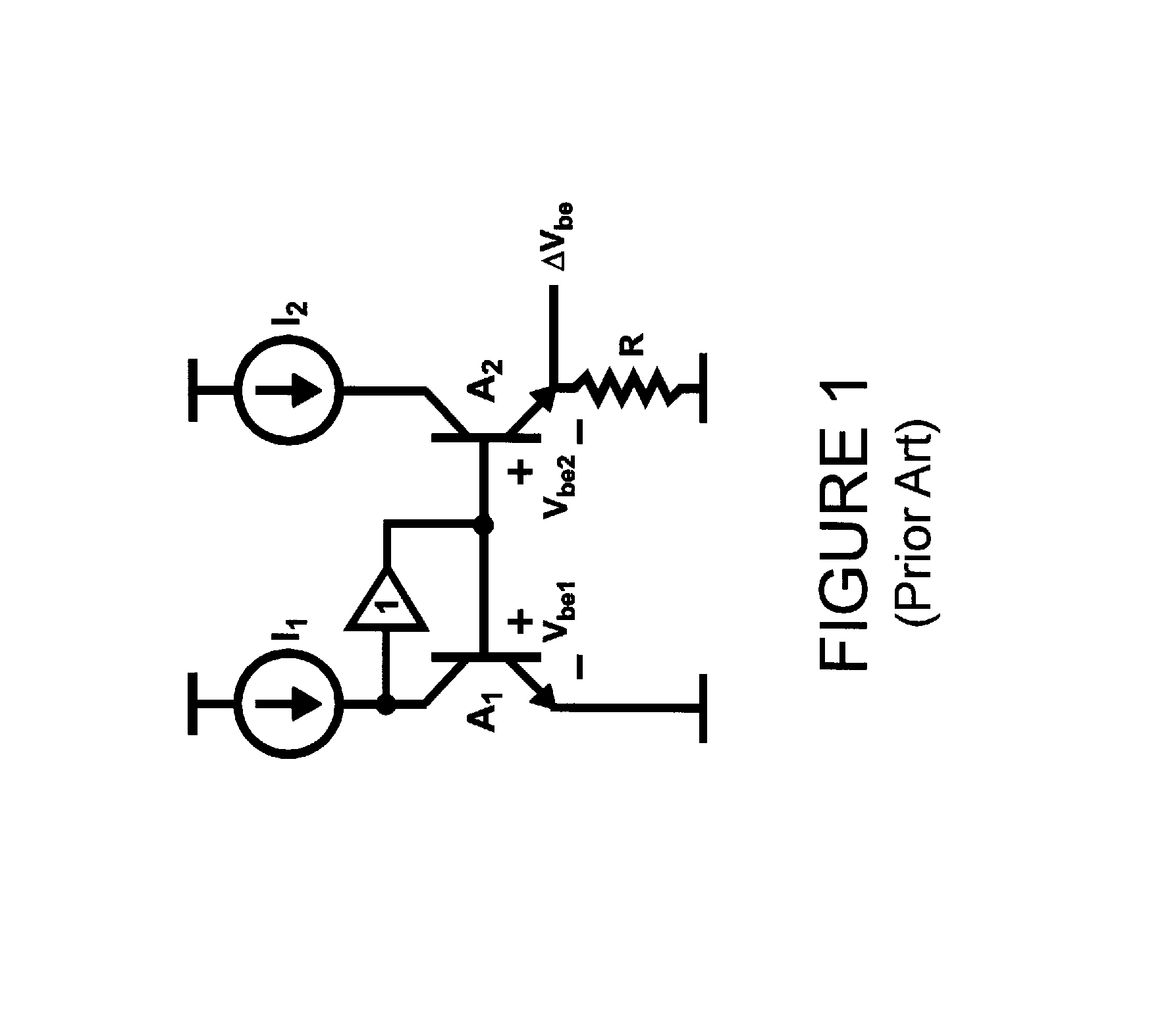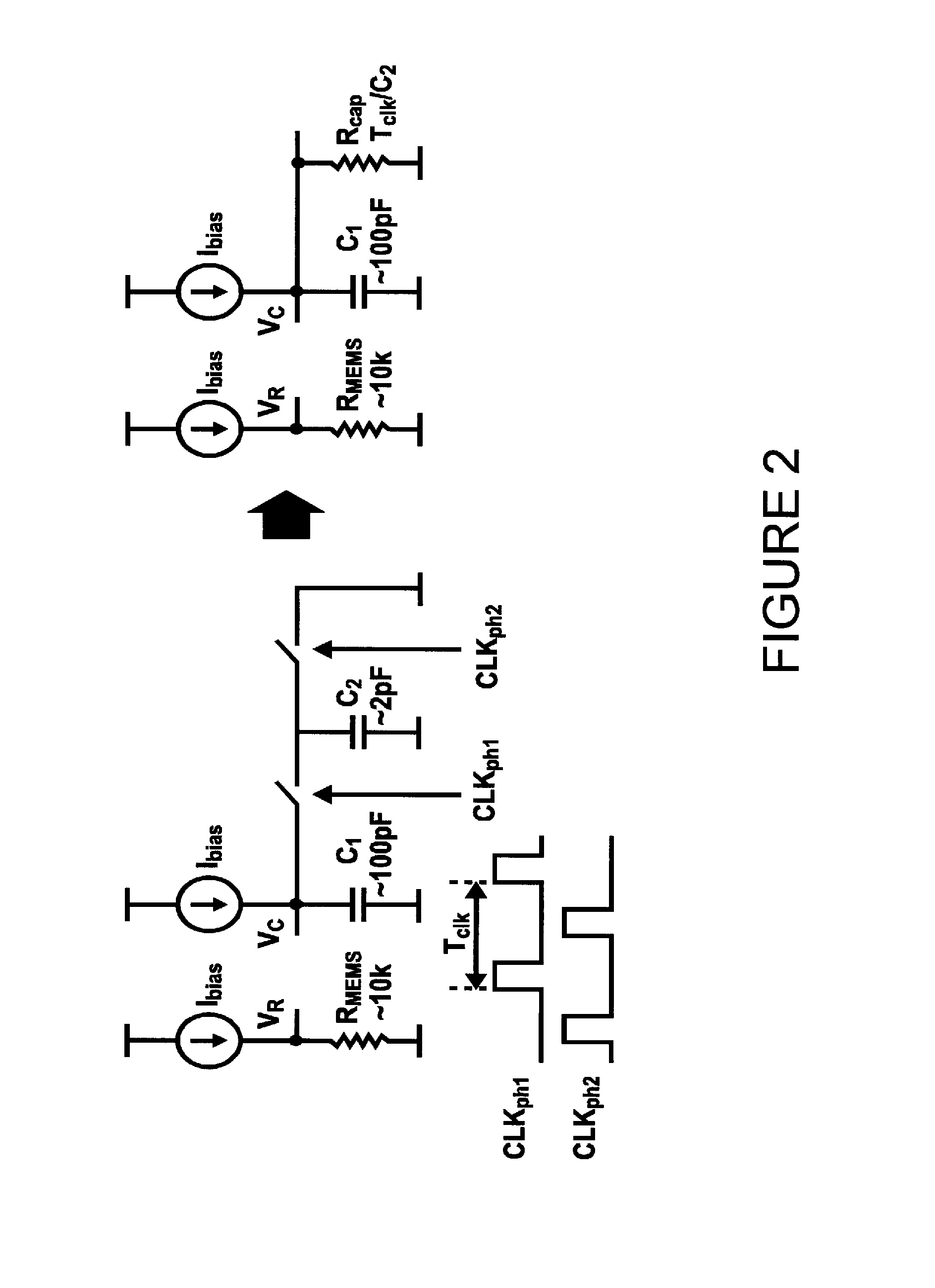Circuitry and techniques for resistor-based temperature sensing
a resistor-based temperature and circuit technology, applied in the direction of thermometers with a/d converters, instruments, heat measurement, etc., can solve the problems of complex operation amplifiers, high current consumption, design and implementation challenges,
- Summary
- Abstract
- Description
- Claims
- Application Information
AI Technical Summary
Benefits of technology
Problems solved by technology
Method used
Image
Examples
Embodiment Construction
[0043]It should be noted that there are many inventions described and illustrated herein. The present inventions are neither limited to any single aspect nor embodiment thereof, nor to any combinations and / or permutations of such aspects and / or embodiments. Moreover, each of the aspects of the present inventions, and / or embodiments thereof, for example, (i) a switched capacitor network that provides or creates a low noise adaptable reference resistor for comparison purposes, (ii) a frequency divider that is controlled by a digital Sigma-Delta modulator to achieve an accurately controlled switching frequency for the switched capacitor network, (iii) chopping circuitry and method to mitigate the effect of 1 / f noise and circuit offsets, (iv) a pseudo-differential VCO-based analog-to-digital converter (ADC) structure, or other ADC topology, to efficiently convert the analog error between the MEMS-based resistance value and the effective resistance of the switched capacitor network into ...
PUM
| Property | Measurement | Unit |
|---|---|---|
| switching frequency | aaaaa | aaaaa |
| temperature | aaaaa | aaaaa |
| voltage sensitivity analysis | aaaaa | aaaaa |
Abstract
Description
Claims
Application Information
 Login to View More
Login to View More - R&D
- Intellectual Property
- Life Sciences
- Materials
- Tech Scout
- Unparalleled Data Quality
- Higher Quality Content
- 60% Fewer Hallucinations
Browse by: Latest US Patents, China's latest patents, Technical Efficacy Thesaurus, Application Domain, Technology Topic, Popular Technical Reports.
© 2025 PatSnap. All rights reserved.Legal|Privacy policy|Modern Slavery Act Transparency Statement|Sitemap|About US| Contact US: help@patsnap.com



